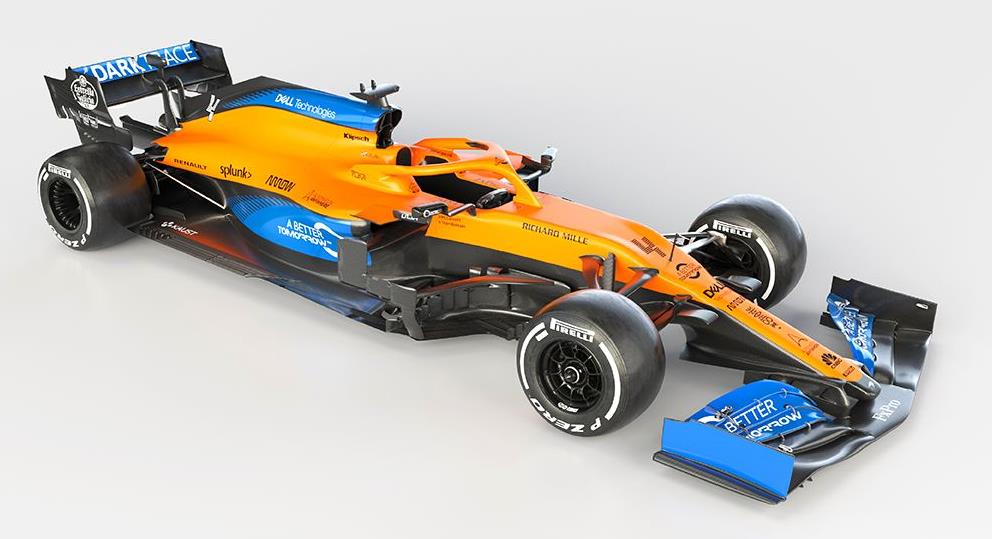The struggles of the McLaren team in Formula 1 have been well documented in recent year, but the 2019 season saw them turn the corner with a ‘best of the rest’ fourth place finish in the constructors’ championship, even a podium finish.

With Andreas Seidl settling into his role as team boss, two hungry and talented drivers who genuinely get along well, and a few more sponsors on board for 2020, McLaren may well feature more regularly on podiums with the new MCL35.

Matte paint job aside (which saves a few grams, mind you), the MCL35 does look like it had undergone a strict fitness regime over winter to emerge looking sleeker and fitter, looking quite different from last year’s car which was compromised by a late power unit switch from Honda to Renault.For 2021, McLaren will race with Mercedes power.
McLaren has also published an exhaustive technical specifications for the MCL35 (see below), and it does make for a good read for F1 nerds.
Chassis
Monocoque Carbon fibre composite, incorporating driver controls and fuel cell
Safety structures Cockpit survival cell incorporating impact resistant construction and anti-penetration panels, front impact structure, prescribed side impact structures, integrated rear impact structure, front and rear roll structures, Halo secondary roll structure
Bodywork Carbon fibre composite, including engine cover, sidepods, floor, nose, front wing and rear wing with driver-operated drag reduction system
Front suspension Carbon fibre wishbone and pushrod suspension elements operating inboard torsion bar and damper system
Rear suspension Carbon fibre wishbone and pullrod suspension elements operating inboard torsion bar and damper system
Weight Overall vehicle weight 746kg (including driver, excluding fuel); weight distribution between 45.4% and 46.4%
Electronics McLaren Applied. Including chassis control, power unit control, data acquisition, sensors, data analysis and telemetry
Instruments McLaren Applied dashboard
Brake system Akebono brake calipers and master cylinders; Akebono ‘brake by wire’ rear brake control system; Carbon discs and pads
Steering Power-assisted rack and pinion
Tyres Pirelli P Zero
Race wheels Enkei
Paint AkzoNobel Sikkens products
Cooling systems Marelli charge air, engine oil and ERS cooling systems
Advanced manufacturing Stratasys 3D Printing & Additive Manufacturing Mazak Advanced Technology Solutions

Power unit
Power unit type Renault E-Tech 20
Minimum weight 145 kg
Primary PU components Internal Combustion Engine (ICE); Motor Generator Unit – Kinetic (MGU-K), Motor Generator Unit – Heat (MGU-H), Energy Store (ES) Turbocharger, Control Electronics
Internal combustion engine
Capacity 1.6 litres
Cylinders Six
Bank angle 90-degree vee angle
No of valves 24
Max speed 15,000 rpm
Max fuel flow rate 100 kg/hour (above 10,500 rpm)
Fuel consumption 110 kg ‘lights to flag’ regulated fuel capacity limit
Fuel injection Direct injection, single injector per cylinder, 500 bar max
Pressure charging Single-stage compressor and exhaust turbine, common shaft

Energy recovery system
Architecture Integrated Hybrid energy recovery via Motor Generator Units, Crankshaft coupled electrical MGU-K, Turbocharger coupled electrical MGU-H
Energy store Lithium-Ion battery, between 20 and 25 kg, Maximum energy storage, 4 MJ per lap
MGU-K Maximum speed, 50,000 rpm, Maximum power, 120 kW, Maximum energy recovery, 2 MJ per lap, Maximum energy deployment, 4 MJ per lap
MGU-H Maximum speed >125,000 rpm, Maximum power, unlimited, Maximum energy recovery, unlimited, Maximum energy deployment, unlimited

Transmission
Gearbox Carbon fibre composite main case, longitudinally mounted
Gear ratios Eight forward and one reverse
Gear selection Electro-hydraulically operated seamless shift
Differential Epicyclic differential with multi-plate limited slip clutch
Clutch Electro-hydraulically operated, carbon multi-plate





